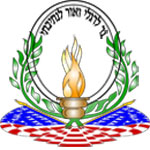talking history | syllabi | students | teachers | puzzle | about us
Jewish-American History on the Web
http://www.jewish-history.com.
Leah M. Berkowitz and the Jewish-American History Documentation Foundation.
Reviewed Feb. 6—12, 2008.
This Web site is a bit like my grandmother’s bookshelf: it is strange and idiosyncratic and peculiar, and it presents the valuable and the questionable, the antique and the facsimile with equal attention. This is its strength and its weakness. Jewish-American History on the Web is the creation of Leah M. Berkowitz, a computer programmer and American Jewish history buff who has devoted a great deal of time and energy to its construction and maintenance. Berkowitz has done an outstanding job of collecting some rare nineteenth-century primary documents, digitizing them, and making them available online.

Perhaps the site’s most valuable contribution is its inclusion of the full text of the Occident, one of the two largest American Jewish newspapers of the mid-nineteenth century. If the site were limited to only this primary document, it would be invaluable to scholars and students as a powerful and important source of information about Jewish life. As a teacher, I can direct my students to the site and have them engage and analyze primary documents from the nineteenth century that otherwise would be difficult to obtain.
The site features three subject areas: “Civil War,” "Wild West,“ and ”Palestine.“ The section on the Civil War consists mostly of primary documents, including letters, articles, and books written on Jewish life during the mid-nineteenth century, alongside a database of Jewish soldiers who fought in the war. The ”Wild West" section includes about fifteen documents, most of which are synthetic articles contributed by contemporary writers. The Palestine section is essentially the full text of an 1850 book by Rabbi Joseph Schwarz that offers a fascinating account of the history of Palestine. Taken as a primary document, the work is a revealing, engaging narrative that illuminates more about Jewish life in the mid-nineteenth century than it does about Palestine.
For making these sources available online, the site is valuable. However, in presenting secondary and primary materials together, the site might mislead some of its visitors. It presents no instruction on how students or other people interested in history ought to read these very different kinds of documents and, as a result, the site becomes a bit confusing and perhaps even misleading (though, I think, not intentionally so). This is not just a fine point of academic nit-picking but rather one that raises questions about the relationship between history and historiography, and the site does nothing to assist visitors in understanding the differences between a letter from a Confederate soldier and a scholarly article about Jews in the Confederacy, for example.
The site has some other funny elements as well, including an “emporium,” which is a kind of Judaica gift shop that serves as a portal for a Web site specializing in Judaica. That, and the advertisements that appear on the front page, reinforce the nature of this labor of love and the costs that Berkowitz assumed in assembling and constructing the site.
I have not seen anything to suggest that Berkowitz is anything other than a lover of American Jewish history, and I commend her contribution of these primary documents from the American Jewish nineteenth century. In this way, the site is a great resource, although it ought be approached with care and a critical eye.
Ari Kelman
University of California
Davis, California
